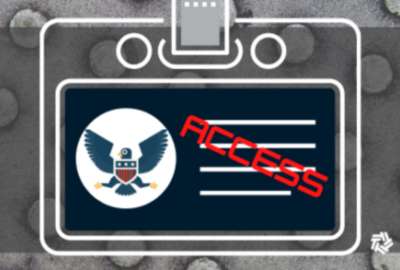

The Defense Advanced Research Projects Agency or DARPA, has launched a project to help advance semiconductor technology in the United States. It is teaming up with...
The Defense Advanced Research Projects Agency or DARPA, has launched a project to help advance semiconductor technology in the United States. It is teaming up with the non-profit Semiconductor Research Corporation and academia to work on seven specific chip technologies. The program is called Joint University Microelectronics Program 2.0. For more, the Federal Drive with Tom Temin spoke with Dr. Adam Knapp, Corporation’s JUMP Program Manager.
Interview transcript:
Tom Temin
This program is not part of the [Creating Helpful Incentives to Produce Semiconductors and Science (CHIPS Act)]. In fact, it’s a program for research that goes back many many years, correct?Adam Knapp
That’s correct. [Joint University Microelectronics Program (JUMP 2.0)] is a $331 million program, with that money spread out over five years. This is the latest iteration in a series stretching back to 1997, in which [Defense Advanced Research Projects Agency (DARPA)] has acted as a consortium member, along with on average about 15 semiconductor companies is well. Under the umbrella of the [Semiconductor Research Corporation (SRC)] to advance decadal goals for semiconductor research in the United States.Tom Temin
And maybe just tell us briefly about the Semiconductor Research Corporation, not to be confused with the Semiconductor Industry Association.Adam Knapp
That’s correct. So the Semiconductor Research Corporation was founded in 1983. By the Semiconductor Industry Association, specifically to target the long term research needs and ongoing research needs of the semiconductor industry. Specifically, we act as a governing consortium where we find projects of interest from the semiconductor industry, or they are brought to us by various semiconductor industry members. And we develop programs to target those specific research goals, by bringing academia on board to actually execute those various goals. And in that guided execution in conjunction with the semiconductor companies, we develop both talent and new research to advance semiconductors.Tom Temin
And what does DARPA bring to this? Basically, what the military and what the national security needs from the industry might be?Adam Knapp
Yeah, so what DARPA brings to this is a long term time horizon. So they’re most interested in the decadal needs in driving semiconductor research in directions of interest, specifically to the [Department of Defense].Tom Temin
It sounds like there needs to be some sort of consensus, though, right? Because the industry knows what it’s capable of doing. And the question is, then what is the next round of technology that we need? Is that kind of the way the consensus has arrived at?Adam Knapp
How our programs are actually structured, specifically in the JUMP model is we have seven research centers that span the full stack of both semiconductor applications and semiconductor technologies. Ranging from cognition to communications, distributed computing, active sensing, and sensing in general to logic and memory, heterogeneous integration or packaging, and then materials and devices. And so what DARPA gets out of this is via the interaction with our 15 member companies, which include both semiconductor companies and defense companies. They actually, with each of these research centers, which have about 20 researchers each. The sponsoring members actually have liaisons that come in to our program and actively guide research in specific areas throughout the duration of the program. So they’re able to actually interact with our researchers and steer them towards things of industry relevance. So the defense industry is able to steer research in directions of relevance to them. And the semiconductor industry is able to steer research in areas of direct relevance to them. And in doing so they not only get all this research tailored to their needs, but they also get a labor force via the grad students and postdocs and undergraduates who are engaged with this research. To be ready made to actually advance these technologies in a five to 10 year timescale.Tom Temin
All right, we’re speaking with Dr. Adam Knapp. He is the Joint University Microelectronics Program or JUMP manager at the Semiconductor Research Corporation. And I guess then DARPA also brings money so that the government requirements also make it into the research plans for the different colleges and universities that own each one of these research areas that you mentioned.Adam Knapp
That is correct. They are a paying member, just like any of the private corporate members.Tom Temin
And there’s research going on at Cornell, Penn State, University of California at San Diego and so forth. So they all have kind of ongoing programs in these different areas. As you mentioned, packaging or intelligent memory and storage and so on, that they have almost a continuous chain of research projects coming in their way.Adam Knapp
Yes. So how each of these centers is actually structured is when they write the proposal. They typically have about 20 to 40 tests per center, that are then approved by our membership when we select their proposals competitively. This program is a five year program. So once they have these centers set up, they perform research on these tasks under the guidance of our sponsoring members over the duration of five years. With some course corrections and cuts along the ways, particularly at the three year mark when we reorient the program, and we have them cut 20% of their sponsored research tests. And then we take 50% of that cut, and use it to reinforce really successful programs. And then we have the other 50% be allocated towards either a new test or tests that we think have enduring promise.Tom Temin
And if one of the research programs comes up with an innovation, might even be patentable for packaging, or for memory layout, or communications and conductivity, any of those areas. What happens to that intellectual property? And how is it then available to people that actually make semiconductors?Adam Knapp
OK, so our sponsoring members can request or the researchers can request for their technologies to be patented. We actually hold the patent in that case. And it is given cost free to our sponsoring members, including DARPA, so it flows through that way.Tom Temin
Understood. And just out of curiosity, there is a couple of different pieces of the semiconductor industry, in terms of the consumer of the chip. There was a time when many of the companies that also made computers made their own chips. It was vertically integrated, over the years that it’s parsed out to where you have the consumers and the pure manufacturers. Are there any companies? I think there’s a couple of defense companies, though, that still operate fabs and still operate semiconductor manufacturing and packaging operations. Is that generally the case anymore?Adam Knapp
So on the commercial side, most companies actually outsource the fabrication of their chips. So most companies that design and sell chips are fabless. Meaning they design the chips, and then they work with a large contract manufacturers such as [Taiwan Semiconductor Manufacturing Company (TSMC)], or Global Foundries, to actually produce those chips. And then they are sold by the fabless company in question. So it’s a really complicated ecosystem involving designers, and manufacturers. But then you also have legacy type companies that do it all, such as Intel. Which designs chips and fabricates chips, or Samsung, which designs chips and fabricates chips.Tom Temin
Right. But it’s pretty rare to find like an IBM that used to make chips these days?Adam Knapp
Yes, we have basically within the Western ecosystem consolidated down to about three players with modern capabilities. So the most modern fabs available are at TSMC, Samsung and Intel.Tom Temin
Which raises the question that this valuable intellectual property funded in part by taxpayers for benefit of U.S. National Security, actually, though, gets out into foreign countries. Now, most of those countries are still on our side. But is that a leakage that we should be worried about?Adam Knapp
So if you’re talking with regard to the JUMP 2.0 program, most of the research that we actually sponsor is on the application side. So it’s about how to better use these chips and interact with the ecosystem. So I wouldn’t really characterize it in the way that you just framed it.Tom Temin
So we’re not getting national security implication type of things and having it built in Taiwan, for example.Adam Knapp
No, so we still have onshore fabs in the U.S. Not all chips need to use the latest nodes. And in many cases, it’s actually better and cheaper to not do so.Tom Temin
Right. And then on the other hand, you could say that because of the CHIPS Act, which again, is not funding this program. It could be that we’ll see more higher end fabs or just simply more nodes that are needed for whatever is needed in the United States by virtue of the investments coming from that legislation.Adam Knapp
That is correct.Tom Temin
And just briefly, how much does DARPA put into this and what is the dollar level?Adam Knapp
I’m sorry, all funding levels are proprietary to our members.
Copyright © 2025 Federal News Network. All rights reserved. This website is not intended for users located within the European Economic Area.
Tom Temin is host of the Federal Drive and has been providing insight on federal technology and management issues for more than 30 years.
Follow @tteminWFED


